By Matthew Platt, Assistant Curator, North Hertfordshire Museum
Thirty four participants joined SEMFed’s first online study day to hear the inspiring case studies of how the museums of Suffolk adapted and thrived during lockdown. Despite all the odds the museums of Suffolk reached their communities in all manner of ways. Lifting spirits in dark times.
We heard from:
- Joe Carr & Christopher Hilton of The Red House, Britten-Pears Arts
- Jenna Ingamells of the Association of Suffolk Museums
- Alana Edgeworth of The National Horseracing Museum
- Eleanor Root of Colchester and Ipswich Museums
- Fiona Lewington of Aldeburgh Museum
The Red House: Engaging children with autism and other special needs with heritage
Joe and Chris told us about their project to engage children with autism and other special needs with the work of Benjamin Britten, Peter Pears and their home The Red House. Classical music and museums and archives can be an unknown and possibly scary space for parents of SEN children, across the last year Joe and Chris have been operating their project to de-mystify and engage.
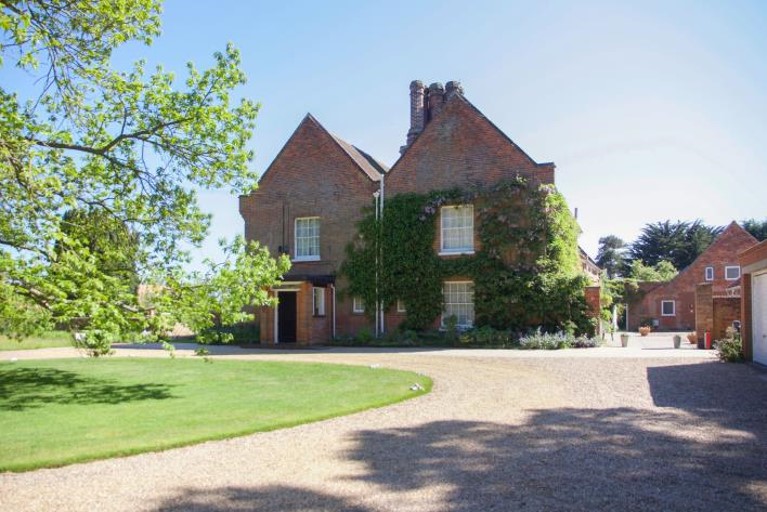
Linking with Autism and Nature and three local schools, each school had two visits to the Red House. These sessions included themes such as ‘Music and the coast’ and ‘Listening to music’ and ‘Music through time’. Autism in Nature produced unique resources based on the collections of The Red House, including things like masks from the Britten opera Noye’s Fludde of 1958.
Taking in the different needs of the different groups Joe and Chris used their ‘Lets make an opera’ sessions as a launch pad. They used their collections of music, set design and Benjamin Britten’s ordinary life to engage, allowing time for children to be inspired by unexpected things — including talks about Britten and Pear’s pet dogs and some spooky set design.
Joe and Chris found that things that may seem ordinary to them as museums and archives workers, passing the ‘staff only’ signs or opening roller racking stacks, were dramatic and awe inspiring to children.
Since lockdown The Red House has continued its engagements with the schools via online sessions. Creating BSL signed music videos and developing sensory backpacks for when visitors return. Future sessions will involve creating soundscapes and classroom engagements via Zoom.
The Red House has used its fantastic example of engagement to help the Archives and Records Association to develop a toolkit and case studies to help other archives engage with special educational needs.
Joe and Chris found that their handling collections were particularly well received.
All of this work will better inform the work of other museums and archives and allow them to make further strides in engaging people who would traditionally be less likely to engage, future work will involve information on their website.
Association of Suffolk Museums: Suffolk Steps and Summer in a Box
Jenna told us about two fantastic Suffolk-wide projects:
Suffolk Steps — A heritage walk programme, usually the museums of Suffolk operate the Summer in Suffolk Museums project which was not possible this year. Instead, using resources they already had the museums were able to pull together a set of heritage walks spanning across Suffolk. Association of Suffolk Museums helped to promote via print press and social media, partnering with Keep moving Suffolk and encouraging people to get out and explore the great outdoors, keeping museums within the minds of participants and planting the seeds for future visits.
The website has 1500 individual engagements and many map downloads. Social media engagement under the hashtag #suffolksteps proved people were participating.
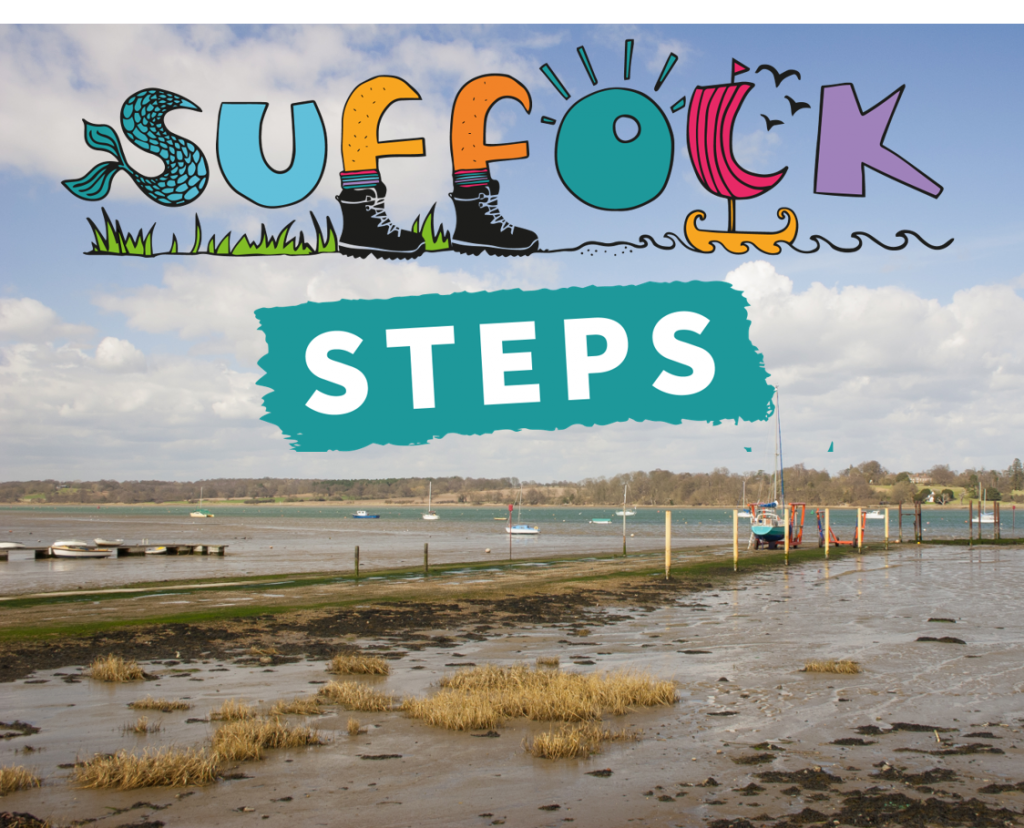
These included activities inspired by the collections and information about Suffolk Museums, including Captain Crab at Lowestoft Maritime Museum or science based experiments inspired by the National Horseracing Museum. Once again laying the seed for future engagements and visits.
The museums worked with children and young people’s organisations as well as the Suffolk County Council, Suffolk libraries, Suffolk Music Service, festival bridge and the County Council post team.
One aspect included asking children to keep a lockdown memory book, asking children to record their memories, just like the work of a museum.
The project proved so successful talks are ongoing for a winter in a box scheme.
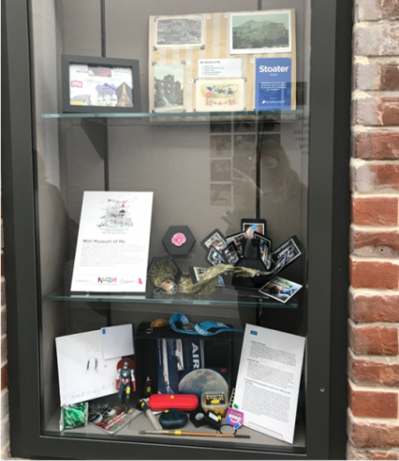
National Horseracing Museum: Mini Museum of Me
Pictures of the boxes were to be collected for an online display with later plans to display some of the boxes within the entrance of the museum, a display is already present of boxes made by staff.
Alana talked about her experiences with her project, Mini Museum of Me, planned as part of the Fun Palaces event across October. The idea of this project was for children to create, within a shoebox or frame, a grouping of objects (museum) about themselves. A late addition in this project was funding for a weekly prize of £10 to spend in the museum shop for each weekly winner.
Normally Fun Palaces occur within the museum with family groups as the main visitors and participants. Alana produced posters for the event which she placed throughout Newmarket. Engagement in this scheme was low to begin with, which Alana believes may have been for a couple of reasons. One thing she thinks may have contributed towards low engagement was the late addition of funding for the weekly prize — the advertising had already gone out by this point. Another aspect may on reflection have been the choice to keep the usual physical advertising which people may not have been out in the town to see. If she was to run the project again she would focus more on social media advertising with promoted posts and the like.
Colchester and Ipswich Museums: Opening up during lockdown
Elle talked more about the boxes/pack scheme which took place during the summer.
At the beginning of her project she considered how many people may struggle to participate online with events or even to be able to print out an activity sheet. She discussed this issue with the job centre in Ipswich. Volunteering Matters who operate from nearby Ipswich Museum were commencing a scheme to distribute emergency supplies and Elle saw the chance to provide craft activities from the museum along with this scheme. She asked Volunteering Matters who agreed and were very excited by their participation.
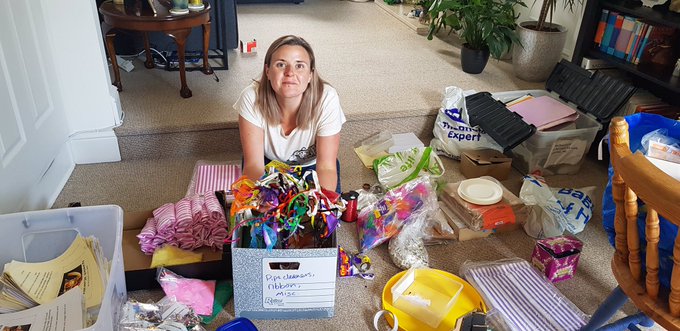
In this early lockdown period Elle decided that ‘if a kid can provide information we can provide the stuff’ and set about raiding the museum education stores for craft materials. Moving very fast to meet the immediate need Elle received a short sharp lesson in what can be done quickly. Using friends and colleagues, some of whom had been furloughed she created over 2000 bags. She recounted how the volunteering project was so beneficial to those participating with set up who had been furloughed or made redundant.
Elle received money from many different sources which allowed the project to grow. Across the changes in rules she had to continually adapt, from having volunteers in her house and garden through to dropping off packs to her nearest council building for delivery.
One of the packs involved a sensory tour of the Victorian Natural History Gallery.
Elle reminded listeners that failing is fun and that in the scramble to produce packs she issued some packs that she was less than happy with.
She included social media details to get feedback but didn’t really expect any (and didn’t get any). She now thinks that if she was to do the project again she may have used a QR code to gain feedback.
Elle has received some really moving feedback from the different groups she worked with and distributed to. Such as a women’s refuge who told her that they were leaving her packs in the rooms to await newly arriving families.
Elle is talking about continuing links with agencies like the job centre to truly help her community.
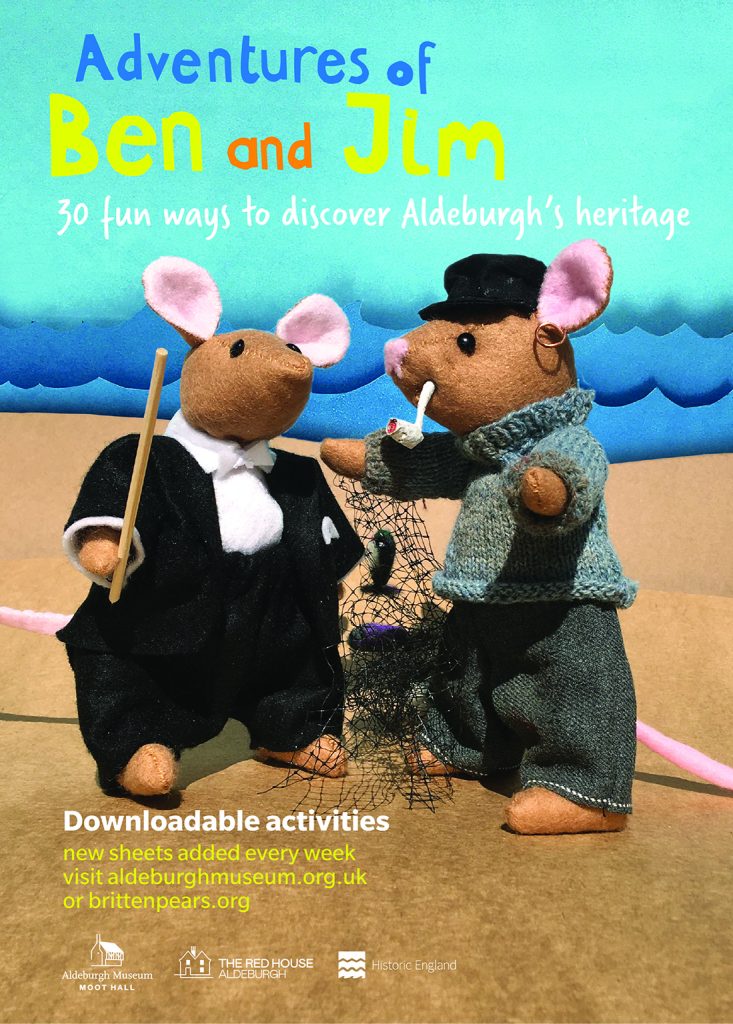
Aldeburgh Museum Moot Hall: Famous Furry Friends of Aldeburgh
Fiona told us all about her viral mice. In February half term Fiona ran ‘Famous Furry Friends of Aldeburgh’ about famous animals such as ‘the Rescuers’ with Aldeburgh connections. For this Fiona produced two mice made of felt. At the beginning of lockdown Fiona sent the supplies for her volunteers to produce some more mice. Fiona received many mice back which she then dressed in historical clothing.
Moot Hall’s mice went viral on social media and many more people began participating in their production. West Suffolk College staff, who had been furloughed, were some of those to participate. They had just finished producing face masks and were looking for another project to get involved with.
As the production of these mice is not so child friendly, Fiona introduced a popular storytelling competition where children could write stories about the mice.
In the Summer Moot Hall produced an exhibition about their mice and also went into partnership with The Red House — producing a Benjamin Britten mouse and worksheets inspired by the collections of both.